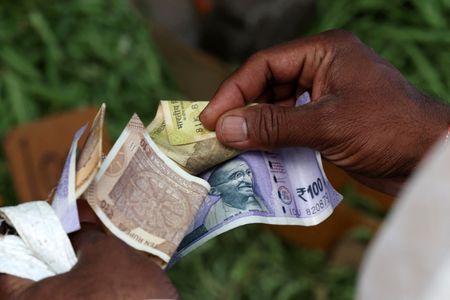By Siddhi Nayak
MUMBAI (Reuters) – Indian non-bank lender Shriram Finance aims to boost its green portfolio 20-fold over the next three years as it diversifies its loan book, a top official said on Tuesday.
“We are planning to add solar panels and similar sectors to our portfolio,” Executive Vice Chairman Umesh Revankar said in an interview.
Shriram Finance aims for a green financing book of 50 billion rupees (about $576 million) against about 2.5 billion rupees to 3 billion rupees right now, which comprises small-ticket two-wheeler and three-wheeler vehicle loans.
Green finance, which is financing of businesses that support environmentally friendly and sustainable projects, has struggled to pick up in India due to limited awareness, high transaction costs, and limited access to affordable green technologies.
The government provides tax incentives and subsidies for renewable energy projects, which make them more attractive to lenders.
For Shriram Finance, the electric vehicle and battery segments are likely to grow given the new offerings in the market, Shriram Finance’s Revankar said.
The non-bank finance company aims to double its overall loan book as well as its assets under management (AUM) by 2030, he said.
Shriram’s total loans stood at 2.51 trillion rupees at December-end while the AUM was at 2.54 trillion rupees.
Assets under management should rise 15% in both the current and next financial years, the official said, as the firm focusses on medium and small enterprises while issuing more vehicle and tractor loans, Revankar said.
“We want to understand those (small) businesses, the ability to repay and how to manage collections,” he said. “We want to grow this business at a minimum 20% next year onwards.”
Small business loans made up nearly 14% of Shriram Finance’s AUM in the October-to-December quarter, while commercial and passenger vehicle loans made up about 46% and 20%, respectively.
Shriram Finance may look to tap the dollar bond route for at least $750 million in the next fiscal year depending on market conditions, Revankar said.
($1 = 86.7480 Indian rupees)
(Reporting by Siddhi Nayak; Editing by Mrigank Dhaniwala)










